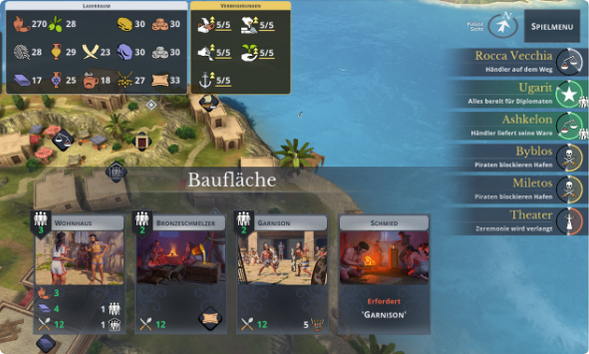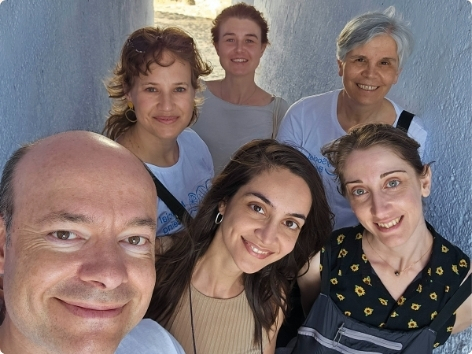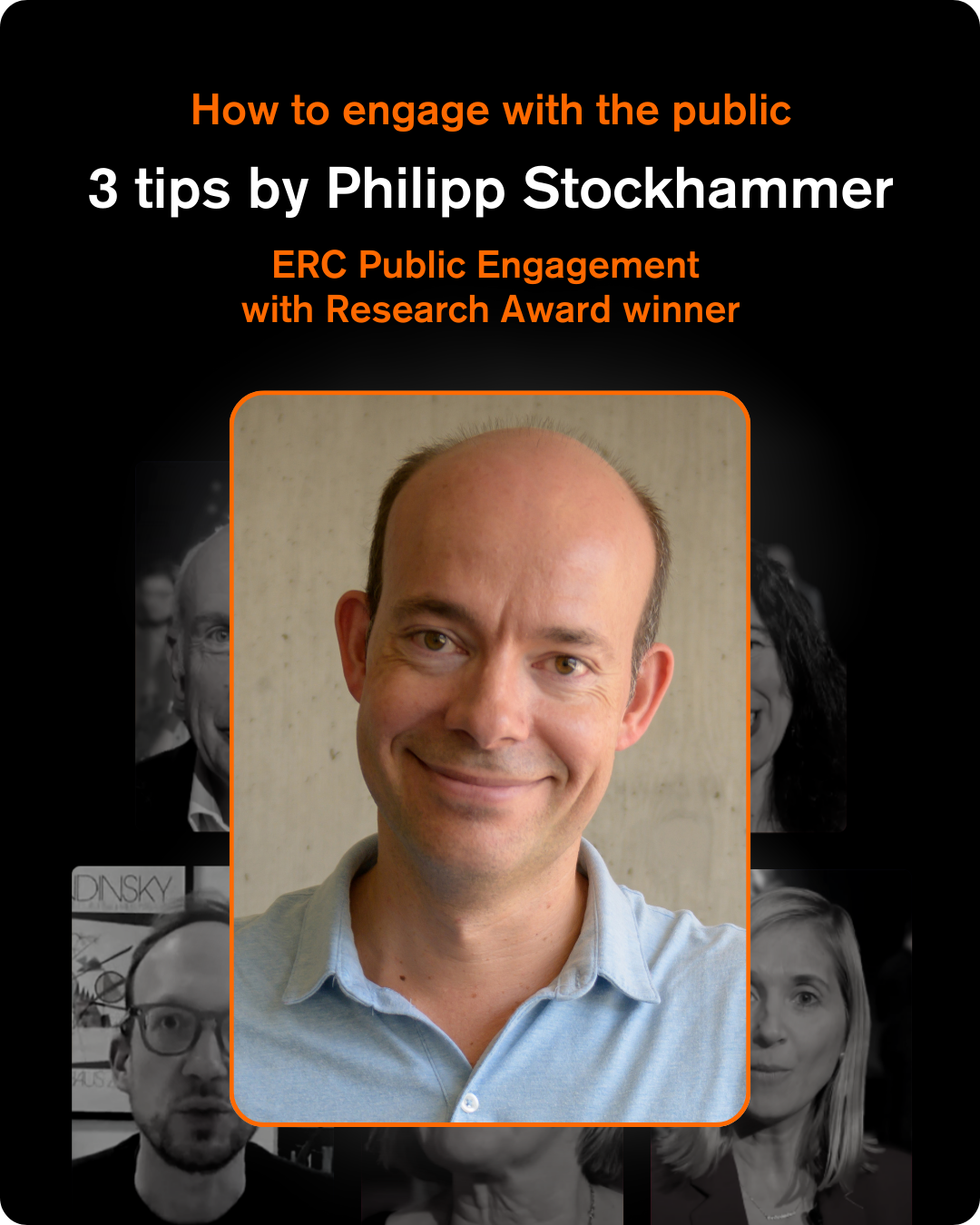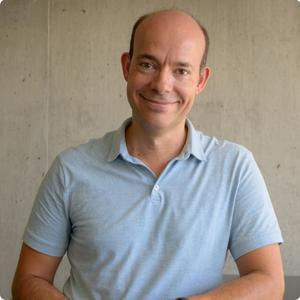From dig sites to digital screens

By collaborating with artists, filmmakers, and game designers Philipp Stockhammer creates content that resonates far beyond the field of archaeology. He sees public engagement as both a responsibility and a source of personal fulfilment.
A particularly rewarding moment for Stockhammer was when a woman recognised him in a Berlin supermarket and expressed her enthusiasm for his work. This moment highlighted the impact that public engagement can have on individuals.
‘I was standing in line at a supermarket when a woman said: “Are you the archaeologist whose podcast I like so much?” I was genuinely surprised that someone would recognise me, but she was so excited, telling me how she always listens to my talks. Moments like these are incredibly rewarding. They don’t provide material benefits, but the joy and appreciation they bring last for days.’
Stockhammer’s commitment to public outreach was deepened when his research, funded by the Heidelberg Academy of Sciences and Humanities, revealed that women played a key role in spreading metal technology during the Bronze Age in Central Europe. The findings sparked backlash, with some male commentators insisting that women’s mobility must have been due to enslavement.
‘This response was eye-opening – it exposed not only resistance to new interpretations of history but also deep-seated biases in today’s audiences’, he says. ‘I felt a duty to inform broad audiences and challenge assumptions about past gender roles.’
When you get it right, you create something that truly connects with a broader audience
 To address these challenges, Stockhammer develops comprehensive outreach strategies for his research with clear messages. He collaborates with filmmakers, artists, and game designers who capture his research in artworks, YouTube clips or interactive formats such as computer games. ‘The key is engaging in deep discussions, ensuring that the final product is both scientifically sound and appealing to the public. And while there are hurdles along the way, when you get it right, you create something that truly connects with a broad audience.’
To address these challenges, Stockhammer develops comprehensive outreach strategies for his research with clear messages. He collaborates with filmmakers, artists, and game designers who capture his research in artworks, YouTube clips or interactive formats such as computer games. ‘The key is engaging in deep discussions, ensuring that the final product is both scientifically sound and appealing to the public. And while there are hurdles along the way, when you get it right, you create something that truly connects with a broad audience.’
According to Stockhammer, sustaining outreach efforts is a major challenge. Funding typically ends when a project is completed, leaving digital tools without support for updates or maintenance. ‘My first game, Bronzeon, was nearly removed from app stores because it needed an update’, he says. ‘For six years, the gaming company maintained it for free, but eventually, the workload became unsustainable. Since they’re a small company, they had to prioritise paid work, and I couldn’t afford to fund the updates myself.’ Only last-minute support from his LMU Institute has enabled new update, keeping the game online for the coming years.
Stockhammer has always considered sustainability, but his recent experiences have given him new insights, allowing him to develop better strategies from the outset, such as setting aside funding or designing tools to minimise updates. ‘Server costs, software updates, and basic maintenance shouldn’t be an afterthought’, he says. ‘We talk about preserving cultural heritage, but digital outputs, like educational games about the Bronze Age, are also a form of heritage. They shouldn't become obsolete just because they can’t be updated.’
He cautions against relying too heavily on social media platforms, which are inherently ephemeral. Instead, he focuses on developing communication strategies that can endure for decades, ensuring that research findings remain accessible and relevant over time.
‘These platforms are useful for immediate outreach, but they’re not sustainable ways to preserve research for future audiences. For me, the goal is to make it last—not just for a few years, but for 10 or 20 years.’
Social media platforms are useful for immediate outreach but lack sustainability for preserving research over time
Stockhammer attributes the success in creating visibility for his research to a deliberate strategy of working with journalists and creating high-quality artwork that can be used by media outlets. He invests significant time in press work, often spending weeks speaking with journalists to ensure that his research is communicated effectively.
 The results are staggering. When Stockhammer and his team deciphered Egyptian embalming practices as part of his ERC project, the findings generated around 800 press reports globally.
The results are staggering. When Stockhammer and his team deciphered Egyptian embalming practices as part of his ERC project, the findings generated around 800 press reports globally.
‘Once major media outlets show interest, using platforms like EurekAlert! can help spread the news. If Süddeutsche Zeitung, The Guardian or National Geographic report on your work, smaller outlets will often follow as major newspapers set the tone for others. Once a story gains traction, it can appear on prominent online news pages and spread to other websites.’
One of the most memorable moments for Stockhammer was when his research on the earliest banana consumption in the eastern Mediterranean was featured on Lady Gaga's blog. ‘I never thought I could reach this audience. It's fascinating how global food issues from ancient times can spark interest, especially when people start wondering about the origins of their bananas.’ This unexpected outcome underscores the power of research to spark curiosity in the most unexpected places, proving that meaningful engagement can transcend disciplines, borders, and even pop culture.

 Biography
Biography
Philipp Stockhammer is Professor for Prehistoric Archaeology with a focus on the Eastern Mediterranean at the Ludwig-Maximilians-University (LMU) Munich and co-director of the Max Planck-Harvard Research Center for the Archaeoscience of the Ancient Mediterranean at the Max Planck Institute for Evolutionary Anthropology, Leipzig. He received an ERC Starting Grant in 2015 (FoodTransforms) and an ERC Consolidator Grant in 2020 (MySocialBeing).

